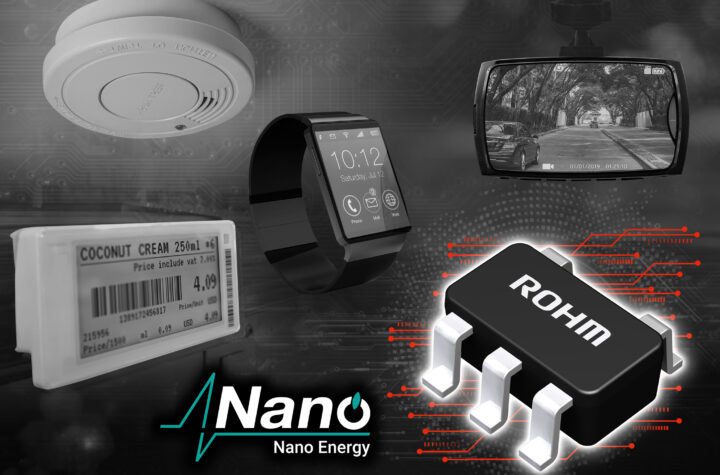Thanks to a new crop of sophisticated technologies, drivers and passengers alike enjoy a more personalized and entertaining ride. For one, communications technology in the car is expanding the industry’s definition of “infotainment.â€
Among the key players in that field, Parrot is greatly noticeable with ground-breaking Android-based solutions. At CES 2014, it unveiled its perspective on infotainment throughout the vehicle, catching the attention of car manufacturers and media alike.
Automotive Industries (AI) asked Eric Riyahi, Parrot’s Head of Global Business Operations, to tell us more about the solutions unveiled by Parrot at the 2014 International Consumer Electronics Show.
Riyahi: At Parrot, we consider infotainment in a very broad sense. This is the reason why our portfolio addresses drivers as well as passengers with a variety of solutions contributing to a greater riding experience. It ranges from head units and ECUs to Rear-Seat Entertainment and Digital TV reception.
AI: How do these solutions meet carmakers needs for connected infotainment? Why does Parrot rely on Android for its infotainment solutions?
Riyahi: Parrot’s solutions for infotainment combine our reference automotive software libraries with the many applications from the Android framework. In an interface meant for an automotive environment, they offer apps such as navigation, music on demand, points of interest and entertainment. The primary reason Parrot chose Android is its vast choice of automotive apps it can offer for any region. In order for an Android-based solution to be most efficient, it should natively run the latest version of the Android platform, as it is a requirement by Google and users alike. Besides, it should adapt to the carmaker’s brand image and user interface.
This platform is implemented in several solutions:
• Ironbox: this OEM-graded ECU is meant to complement an existing head unit. It is the case for Volvo’s Sensus Connected Touch.
• NIS: this is a full-fledged OEM head unit in a 1-DIN format.
• RSE: these units bring connected infotainment to rear seat passengers, with a wide choice of entertainment apps, such as gaming, social media etc.
AI: What is the “SOCA†software architecture Parrot launched during CES?
Riyahi: SOCA is a distributed software architecture. It comprises a Linux environment and an Android framework. They interact with each other thanks to an applicative framework based on the standard Android SDK. The Linux environment hosts the Parrot automotive libraries. These libraries range from media content sharing, acoustics in the car, voice recognition, hands-free telephony to mobile device management, internet access through 4G modems, Wi-Fi etc. The key benefits of the SOCA architecture are shorter Android integration cycles and a greater ability to test and validate each library independently from the Android version.
AI: Besides great versatility and scalability, what is the impact for carmakers in terms of HMI ?
Riyahi: Thanks to Parrot’s advanced P7 ASIC, SOCA offers advanced overlay capabilities allowing to execute Android and a Qt-based automotive environment at the same time. In the SOCA interface, the Qt-based environment is displayed in a dedicated and configurable frame buffer. Car manufacturers can therefore reuse their AIexisting Qt applications to integrate comfort features such as climate control within the infotainment solution’s interface.
AI: Among the solutions Parrot exhibited at CES was the “Smart Antennaâ€, tell us more about it.
Riyahi: Parrot holds a strong expertise in the reception of Digital Radio and Television: we offer an excellent compatibility level with the many protocols to be found around the world. Our portfolio includes a “Smart Antenna†and an “R-TV boxâ€. The Smart Antenna is an Ethernet-enabled receiver for AM/FM, Digital radio/TV and GPS. Thanks to an Ethernet network in the car, it can transmit its various signals to other nodes in the car such as the head unit or the RSE system. On top of these features, the “R-TV box†acts as a media center and transcoder. With this variety of options, Parrot lets OEMs meet customer demand for digital radio in countries such as Germany – where it has become a must-have – and digital TV, as can be witnessed in Asia.
AI: You have often mentioned the use of a network within the vehicle. Is Parrot involved in the development of the AVB protocol?
Riyahi: Ethernet, which the SOCA architecture supports, is the upcoming revolution in car infotainment. It will let nodes such as head unit, RSE systems, cameras, 4G modems, Smart Antennas etc. connect to one another easily, in a scalable manner. The implementation of Ethernet in the car will meet the stringent requirements of the automotive industry thanks to the AVB (Audio Video Bridging) protocol. With AVB’s “deterministic†network management, a car manufacturer can define precise timing for streams between specific network nodes. The bandwidth between them can be enforced, regardless of the level of traffic on the network. Parrot is involved in AVB technology for automotive applications over Ethernet to empower its upcoming infotainment solutions.
AI: How can our readers learn more about Parrot’s solutions?
Riyahi: We’ll be demonstrating our technologies during the Content & Apps conference in Munich in April, Telematics Detroit in June and SAE Convergence in October.














































 Separation of software from hardware creates new opportunities
Separation of software from hardware creates new opportunities



